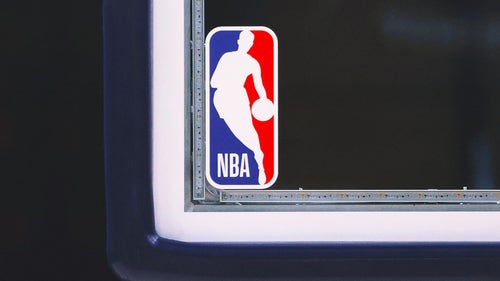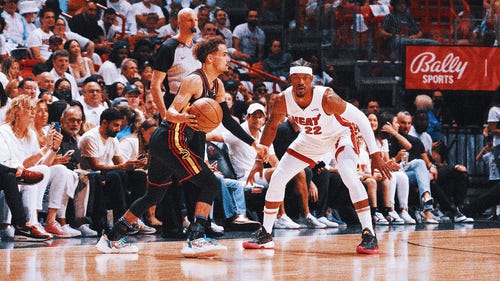
2017 NBA Draft Pre-Season Scouting Report: De'Aaron Fox

The 2017 NBA Draft is loaded with point guard prospects. Markelle Fultz, Dennis Smith Jr., and Frank Ntilikina are all possible top-5 picks, and sitting not too far behind them are two other potential lottery talents in Lonzo Ball and De’Aaron Fox. Fox will be running the show at Kentucky, where he will display his floor general abilities alongside their typical star-studded front court. What does Fox bring to the table?
Off-Ball Offense
Fox works primarily with the ball in his hands as a point guard, and his off-ball duties almost only consist of spacing the floor for other players. Being a point guard mitigates the need for him to function as a spot-up shooter, but his lack of outside shooting is one of the biggest holes in his game.
According to MaxPreps Fox was a 34 percent three-point shooter across his high school career and a 74 percent shooter from the free throw line. The DraftExpress database, which presumably has logged more of Fox’s games against higher levels of competition, puts Fox as an only 28 percent three-point shooter over the course of 266 attempts. Those numbers aren’t disastrous, but as a guard in today’s NBA game they represent a significant weakness.
The good news for Fox is his shot mechanics are by no means broken. He tends to grip the ball too tightly with his off-hand, preventing the ball from getting necessary backspin, but if he can just learn to use his guide hand more lightly, his overall form and motion are compact and fluid. Seeing how his outside shot develops is absolutely crucial to properly projecting his NBA future.
On-Ball Offense
Fox is an incredibly dynamic player with the ball in his hands. The first thing that stands out when watching him is his speed with the ball. He can jet down the court in transition, has a quick first step, and has the burst to rise up above the rim in impressive fashion despite standing at only 6-3. Fox is glorious in transition, where his superior physical tools make him nearly impossible to stop.
In the halfcourt, Fox’s combination of quickness and tight handle allow him to probe the lane and put pressure on the defense. He’s not overly creative with his dribble moves, but he does a good job changing speeds and breaking defenders down. The one big flaw with Fox’s ball handling is his reliance on his dominant left hand. It might be more of a product of fear of finishing with the right, but Fox is much more prone to operating with his dominant hand than a typical high-level point guard.
As a creator for others, Fox fits the bill for what you would want from a point guard. He’s got a pretty good feel for navigating pick-and-roll, and he has the vision to find shooters or slip interior passes at a high level. He’s not a truly elite creative passer, but he’s right in the next tier as a high level distributor.
More from Upside and Motor
The biggest weakness in Fox’s game is his inability to create for himself. He steps into pull-up jumpers with confidence and good footwork, but for someone who so often gets an edge on his man, his tendency to stop short for jumpers is often a poor decision. The reason he’s so hesitant to get all the way into the lane might be his rail thin frame preventing him from finishing among bigger bodies. He’s a pretty elite leaper with a head of steam in space, but in the tight confines of the halfcourt he often seems unable to extend around defenders. At 6-3 and only 170 pounds, he really struggles to handle contact around the hoop and is a relatively poor finisher as a result. Instead, Fox relies on a floater game which shows signs of promise, but is ultimately inefficient at this stage.
His inefficient outside shot, weak build, and lack of advanced finishing craft make him both a low-volume and low-efficiency scorer. Fox has the tools to create an advantage for the offense in both pick-and-roll and one-on-one situations, but in order to maximize his creation for others, he needs to improve on his own finishing.
Defense
The primary appeal in Fox’s prospect profile is defense. His 6-6 wingspan gives him decent length for a point guard, but his combination of instincts and athletic tools are truly elite. His quickness with the ball translates to his lateral movement, and he’s got the speed to hound opposing ball-handlers all over the court.
What takes him to the next level as a defender is his innate ability to read his opponents. While defending a ball handler he naturally reacts to and mirrors his man’s movements, and he presses up so much on guys that he’s a threat to pluck the ball at any time. Off the ball he uses his speed and anticipation to jump passing lanes and fly all over the court.
The only weakness in Fox’s defensive profile is, well, his weak-ness. Being so thin inevitably hurts him when fighting over screens, and big guards sometimes overpower him even when he stays with them step-for-step. His quickness and length allow him to lessen the negative effects of his frailty, but improving his frame will allow him to maximize his potential on the defensive end.
Conclusion
Fox wasn’t particularly impressive in the spring all-star game circuit, and after previously being considered a possible top-5 guy he’s fallen more into the late-lottery range. However, his biggest strengths — passing and defense — often stand out the least in all-star game settings, possibly leading to an underrating of Fox’s game.
If he continues to look like a truly elite defender, and shows some minor improvements in his outside shooting ability he could ascend into the top-5 conversation with Fultz, Smith, and Ntilikina. My mantra is that defense is always underrated in the draft, and Fox could be yet another example.
This article originally appeared on








